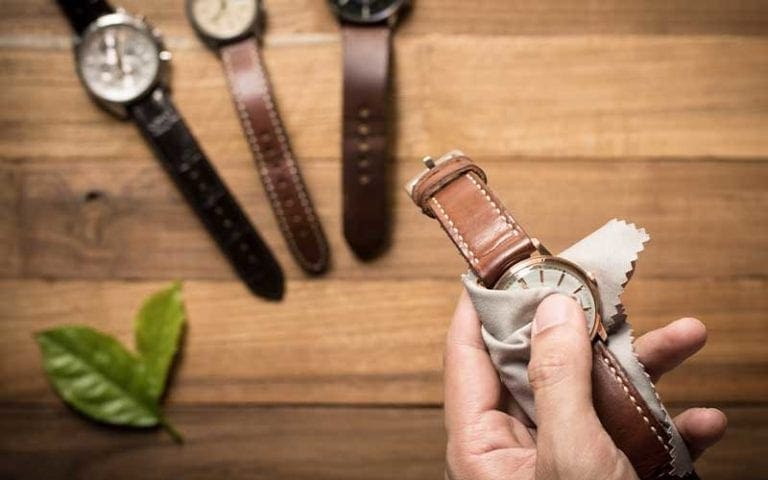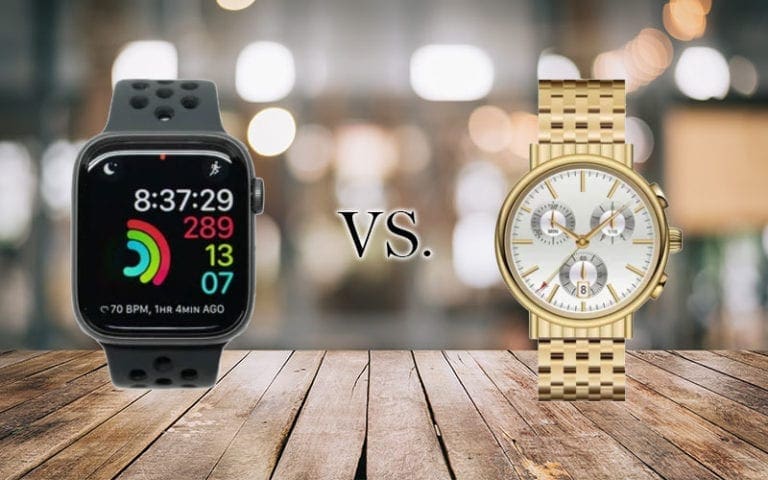Okay, so your timepiece might not match up to the world’s most expensive watch, which sold at auction in 2019 for a whopping $31 million. But if you’re a passionate horologist, whatever’s on your wrist has likely set you back a pretty penny. That means it’s worth taking the time to fix it when it breaks.
Outside of scratched glass or a too-long strap, watch clasp number among the most common clock repair jobs. No matter how expensive your wristwatch is, the clasp sees a lot of use, making it vulnerable to failure.
Did you know you can often fix a clasp yourself at home? Read on to find out how.
Types of Watch Straps and Clasps
Do you prefer a leather or nylon band or a flip or butterfly clasp watch? The world of DIY watch repair can get complicated if you don’t know how to navigate these options.
Watch Straps
Before we get into talking about types of watch clasps, it’s a good idea to make sure you’re familiar with all the types of watch bands out there. This is because fasteners are most often used on metal and sometimes leather straps, while buckles tend to be used on plastic, nylon, canvas, and other flexible material straps.
Luxury watches tend to come with either a quality metal, premium leather, or, recently, an on-trend NATO strap. Because these materials are more durable and often more expensive, they are preferred by high-end watch collectors. After all, if your watch face is studded with diamonds or is a rare release by a name-brand watchmaker, you will not put a plastic strap on it, are you?
Watch Clasps
If you’re sporting a timepiece with a metal or leather strap, the clasp is what’s keeping it fitting snuggly (or not, in the case of a bangle-style ladies’ watch) on your wrist.
The most common types of clasps include:
- Deployment clasps
- Jewelry clasp
- Velcro
- Butterfly clasp
- Push-button clasp
Some clasps are easier to use than others. For example, delicate jewelry clasps can be fiddly and are best suited to formal wear. On the other hand, Rolex designs their signature clasps to snap shut securely and spring open easily.
Different Types of Watch Clasp Repair Made Easy
Are you fretting about the cost of clasp repair? Before you trot off to your local watch repair shop or jeweler, check to see if it’s possible to do a DIY fix.
Fixing Deployment Clasps
Deployment clasps are sometimes known as a Z-type clasp since they resemble a letter Z when open. A loose deployment clasp is in danger of buckling, and it’s tempting to try to push the metal back into shape. However, this can lead to cracking or unfixable bends.
Instead, first, check to see if there are any cracks in the fastening. If there are, unfortunately, it’s time to get a replacement. If the clasp looks intact, next, take a close look at the hinge.
If the hinge keeps trying to spring open even when closed, you can gently bend the tabs down to create more space for it to bend–use a pair of pliers from a watch repair kit. At the same time, check to make sure the dimensions of the fold pieces are the same. If they aren’t, slightly reshape them until they match.
Fixing a Push-Button Clasp
These clasp types are of the trickier variety in watch repair.
This is because the push-button mechanism is more complicated than a simple fold and click clasp. The fixture also gets clogged with dirt and oil easily if not cleaned regularly, and the spring is prone to malfunction.
In most cases, the pin that keeps the clasp head in place falls out. If you managed to retrieve that when it came loose, you can slip it back in, and voila! Your strap is good as new.
While a regular clean can keep the need for repairs at bay, you most often need to replace it when a push-button clasp breaks.
Fixing a Jewelry Clasp
This hook-and-hoop style clasp is most often seen on finer womens’ dress watches, hence the name “jewelry” clasp. The hinged hook on one end of the strap folds neatly over into a loop on the other strap.
When fixing this kind of broken watch clasp, you first need to diagnose the issue. The hook may be bent in some cases, and the loop pin isn’t sitting in the groove correctly. Gently hammer the hook straight.
If the pin part of the loop is broken, you’ll need to head to your jeweler or watchmaker for a replacement.
Fixing a Butterfly Clasp
Butterfly clasps resemble deployment clasps in that they fold in on themselves.
But a butterfly clasp folds out in two directions and then clicks back into place in the strap center when folded down again. They’re popular with luxury watch brands because they leave a seamless finish when closed.
Though typically sturdy, well-crafted, and comfortable, butterfly clasps are not immune to breakages. First, check to make sure the hinges are moving smoothly.
Is there a pin missing or loose? If yes, it will need to be pushed back into the hinge or replaced.
In some cases, the metal strips have warped and weakened. Press down on the edge of both sides of the metal or push them up to create a tighter or looser fit.
Most importantly, be careful to protect your watch face from scratches when attempting a repair job. For example, work on a soft cloth instead of a hard surface.
When to Buy a New Watch
Are you wondering when to consider buying a new watch rather than repairing your old one? Basically, if you can’t repair your watch clasp or it’s going to cost a fortune for a professional watch repair person to fix it, then it’s time to go shopping.
In some cases, you might be able to replace the strap of the watch. Keep replaceable straps in mind when buying a new watch and purchase a spare band or two.
If you’re in the market for a new luxury timepiece, take a look at the extensive collection available online at Merakai Timepiece. You’re guaranteed to find a watch for every taste and occasion.






